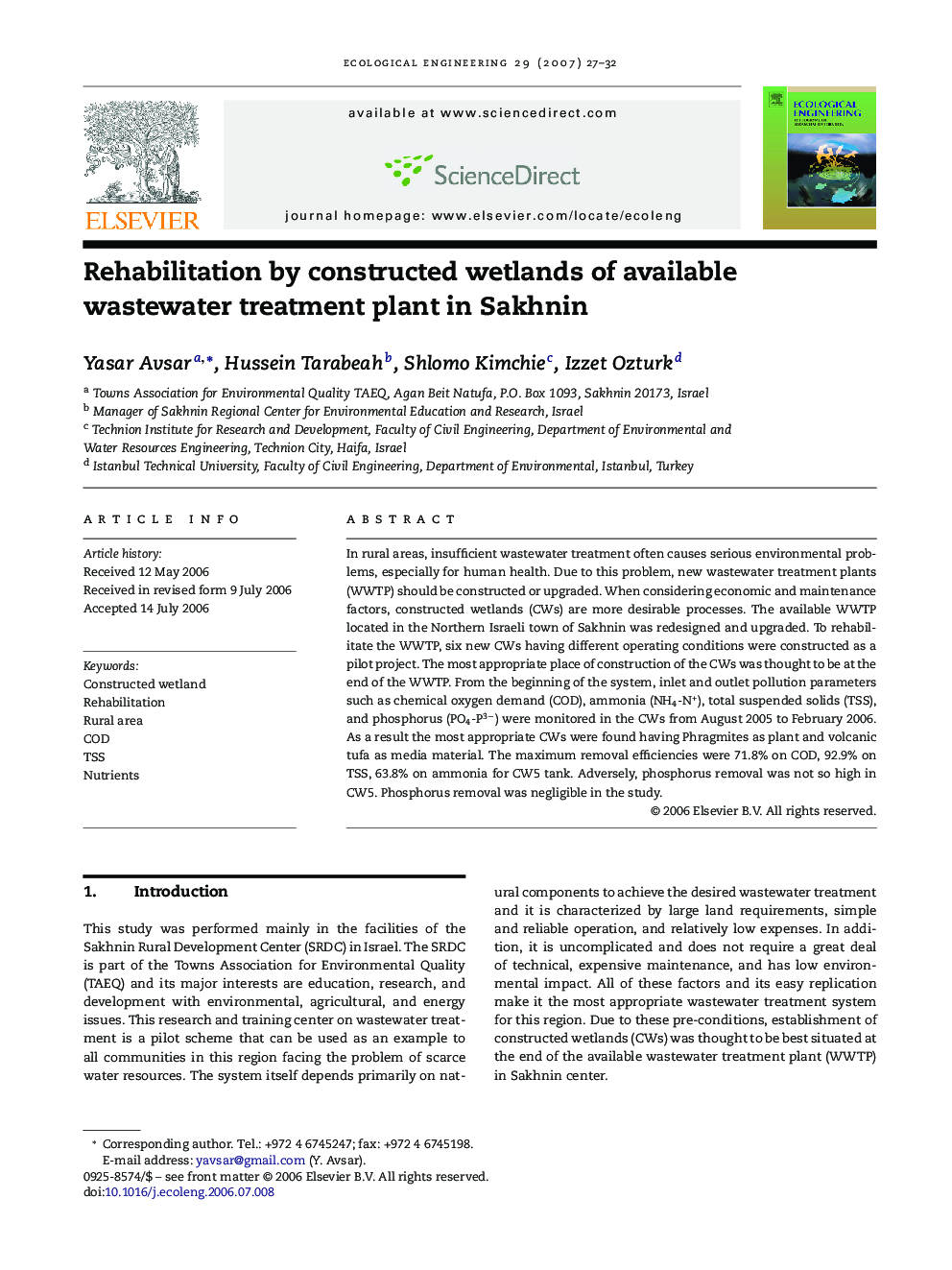| Article ID | Journal | Published Year | Pages | File Type |
|---|---|---|---|---|
| 4391187 | Ecological Engineering | 2007 | 6 Pages |
In rural areas, insufficient wastewater treatment often causes serious environmental problems, especially for human health. Due to this problem, new wastewater treatment plants (WWTP) should be constructed or upgraded. When considering economic and maintenance factors, constructed wetlands (CWs) are more desirable processes. The available WWTP located in the Northern Israeli town of Sakhnin was redesigned and upgraded. To rehabilitate the WWTP, six new CWs having different operating conditions were constructed as a pilot project. The most appropriate place of construction of the CWs was thought to be at the end of the WWTP. From the beginning of the system, inlet and outlet pollution parameters such as chemical oxygen demand (COD), ammonia (NH4-N+), total suspended solids (TSS), and phosphorus (PO4-P3−) were monitored in the CWs from August 2005 to February 2006. As a result the most appropriate CWs were found having Phragmites as plant and volcanic tufa as media material. The maximum removal efficiencies were 71.8% on COD, 92.9% on TSS, 63.8% on ammonia for CW5 tank. Adversely, phosphorus removal was not so high in CW5. Phosphorus removal was negligible in the study.
